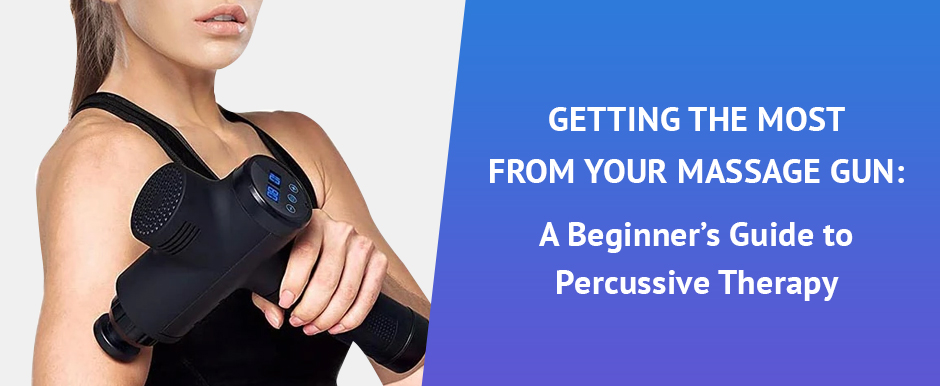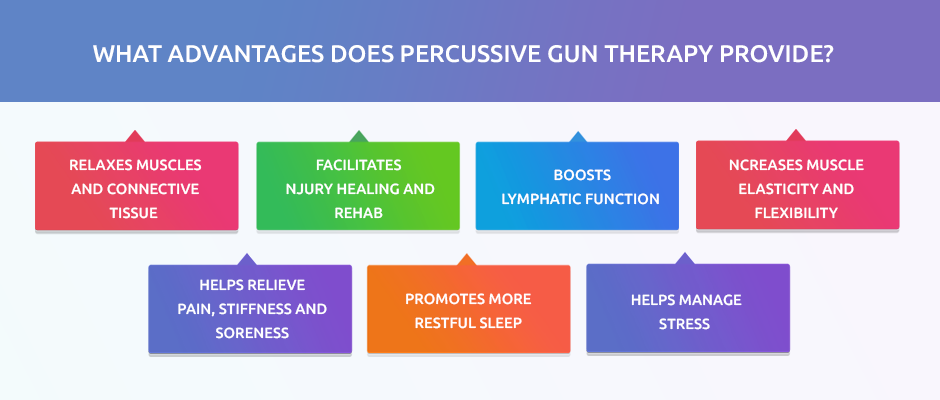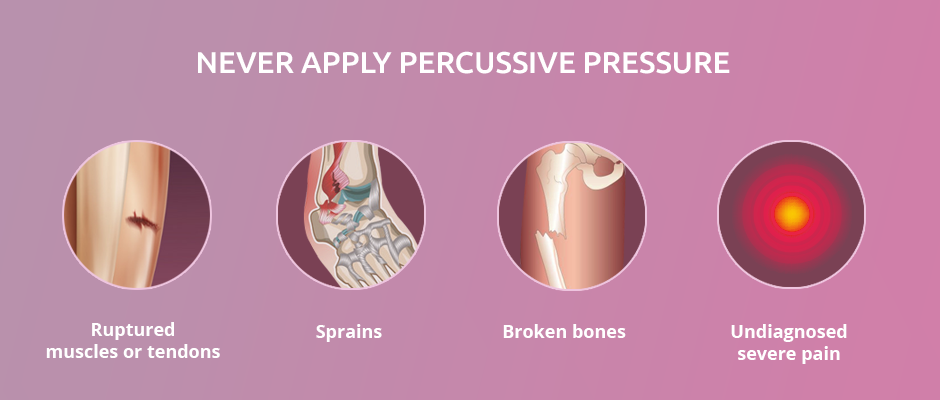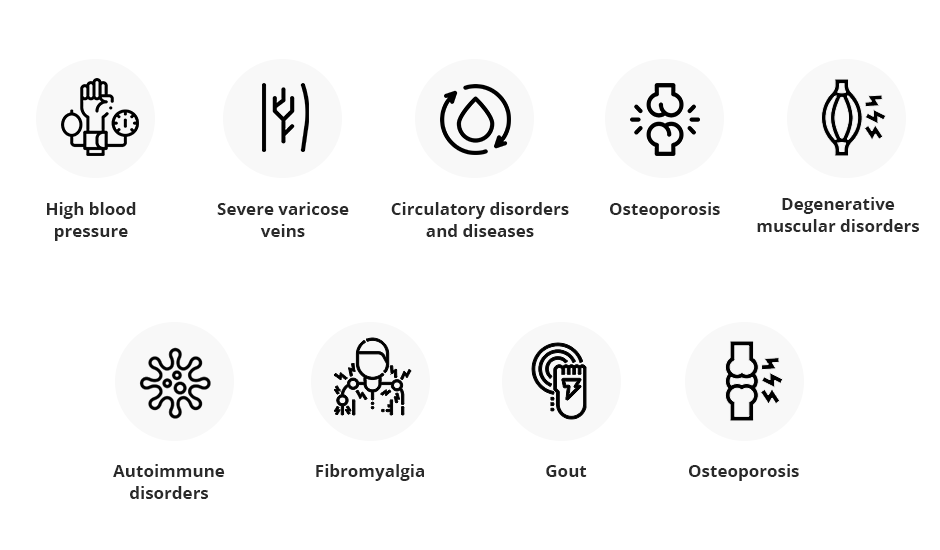August 14, 2023

For years now, athletes, trainers and therapists have been using percussive therapy delivered with a handheld device to relieve post-exercise stiffness and soreness.
Recently, consumer-grade percussive devices have hit the market at affordable prices, and they have become popular gifts for athletes and fitness lovers. Percussive massage guns resemble a hand drill, and most have multiple attachments and settings. Choosing the right percussive device and knowing how to getting the greatest benefits from this popular self-care technology.
Our massage gun guide explains the underlying mechanisms of percussive device therapy, and goes into get the greatest benefits.
Percussive device therapy uses vibration and pulsation tores muscle tension balance for improved alignment.

Physically active people often use a percussive device shortly before playing sports or working out to soft tissues, warm up muscles and connective tissues, and increase their elasticity and range of motion. Using a massage gun for warming up enhances physical performance and lowers your injury risk.
You can also use your percussive device after physical activity to release muscle knots, relieve muscle stiffness and promote the removal of metabolic waste.
Percussive gun therapy decreases inflammation in muscles by flushing extracellular fluids and deoxygenated blood from your tissues and shunting them tory system. When used correctly, percussive device therapy can diminish the discomfort of delayed onset muscle soreness (DOMS) and speed up post-exercise recovery.

Users of percussive therapy report a plethora of benefits:
Relaxes muscles and connective tissue
Stiff inelastic muscles, tendons and ligaments can inhibit fluid movement and undermine physical performance. They can pull your joints out of alignment, affecting static and dynamic posture, and contributing to injury during physical activity.
Facilitates injury healing and rehab
Percussive pressure helps to healing cells.
Boosts lymphatic function
Your lymph system is essential to maintain fluid levels in your body’s tissues and promotes optimal function immune responses.
Increases muscle elasticity and flexibility
Percussive therapy warms up muscle temperature and gently stretches muscle cells. Warm elastic muscles allow for unrestricted movement with greater joint range of motion.
Helps relieve pain, stiffness and soreness from overuse injuries
Use your gun to ease pain and discomfort from tendinitis, shin splints, plantar fasciitis and back pain. You can even use a massage gun for sciatica. However, use extreme caution when treating these conditions with percussive therapy.
Promotes more restful sleep
Tense, sore muscles can keep you awake by putting pressure on nerves, stimulating your central nervous system. Productive sleep is essential to post-exercise muscle recovery and optimal physical and cognitive performance.
Helps manage stress
We carry stress in our muscles, especially in the neck and shoulder region. Chronic stress keeps us in fight or flight mode, causing blood pressure to surge, elevating hormones associated with weight gain and promoting metabolic disease.

It is best to more superficial tissues. Gradually increase pressure by 10-20 g for each application, and gradually experiment with different attachments.
While percussive devices are generally safe, overusing your percussive device, or applying to repair.

Excessive pressure can also cause rhabdomyolysis, a life threatening condition caused by ruptured muscle cells that leak to your bloodstream. Rhabdomyolysis can cause acute kidney damage, cardiac arrest, hepatic failure, and even death. A 2020 report by Chen et al. documents a case of rhabdomyolysis caused by inappropriate use of a percussive device.
To release taut muscle bands called trigger points, vertical compression is recommended. Hold the gun directly above the trigger point for 40-60 seconds. Do not allow the pain from compression to relax.
Remember that muscles relax, and fascia releases. If your goal is to your fascial network at that location.
Go easy on percussive pressure and exercise caution when treating the following conditions:

You should never apply percussive pressure to any of these conditions:

Consult your physician before using percussive device therapy if you have the following conditions:

Remember that every action has an equal and opposite reaction, so be gentle with yourself when using percussive therapy, and increase pressure gradually to avoid doing more harm than good.
Even the most advanced percussive device cannot effectively release active trigger points. Active trigger points often produce tenderness and cause referred pain in remote areas of the body. Latent trigger points, on the other hand, are irritable taut bands of muscle associated with a local twitch response that may release in response to percussive therapy.
To release an active trigger point, you need professional intervention. Treatment approaches for active trigger points convert physical energy to a biological reaction, a process called mechanotransduction. Effective methods include extracorporeal shock wave therapy (ESWT), ultrasound guided dry needling and acupuncture.
Dr. Lev Kalika is a world-recognized expert in musculoskeletal medicine. with 20+ years of clinical experience in diagnostic musculoskeletal ultrasonography, rehabilitative sports medicine and conservative orthopedics. In addition to operating his clinical practice in Manhattan, he regularly publishes peer-reviewed research on ultrasound-guided therapies and procedures. He serves as a peer reviewer for Springer Nature.
Dr. Kalika is an esteemed member of multiple professional organizations, including: